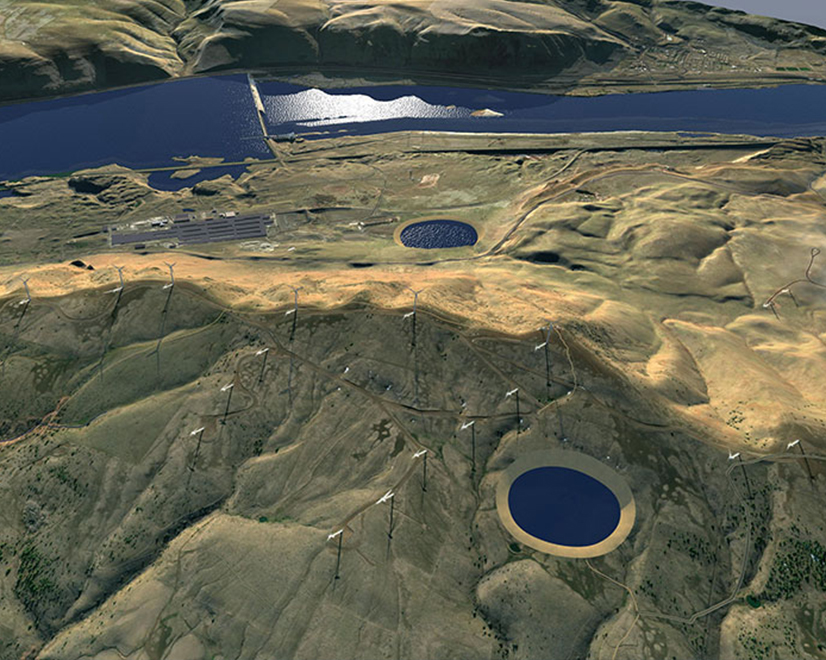
Washington’s first pumped storage generator is expected to go online between 2028 and 2030, if it can obtain the needed state and federal approvals.
The project is designed to generate 1,200 MW, which is the roughly the same amount of electricity produced by a full-size nuclear power reactor.
While the pumped storage concept has been around for decades, it is just emerging in the Pacific Northwest. “It’s a tried-and-true technique and has been around for a hundred years,” Erik Steimle, Rye Development’s vice president of project development, told NetZero Insider.
The privately owned $2 billion project would be located at the top and bottom of the cliffs of the Columbia River Gorge in sparsely inhabited Klickitat County, Wash., near the John Day Dam.
The developer, Rye Development of Boston, plans to build two lined 600-acre reservoirs separated by 2,100 feet in elevation. One reservoir will be on the river shore and the other at the top of the cliff. Underground pipes will connect the two reservoirs with a subterranean generating station along the channel. Water will flow from the upper reservoir to the lower one to power the generator, and then will be pumped back up to the upper reservoir in a closed-loop system.
The project will use water purchased from Klickitat County Public Utility District, which owns a 15,591 acre-foot/year water right gifted by the former Columbia Gorge Aluminum smelter.
Rye Development has 22 projects east of the Mississippi River that involve converting non-powered dams into hydroelectric dams. West of the Mississippi, it is also developing a similar 400 MW pumped storage project at Swan Lake in southern Oregon. The two Northwest projects together will be capable of storing 12 hours of energy, giving them flexibility in providing electricity to the region’s power grid.
The $800 million Swan Lake project is scheduled to go online in 2026.
Klickitat County’s government has been pursuing renewable energy projects for a couple decades. At least two solar farms are in the works and eight wind turbine projects have been or are being built. “This is a vision of the community of Goldendale [the county seat],” Steimle said.
The Klickitat project is in the permitting stage. It is halfway through a State Environmental Policy Act review and is advancing toward a FERC permit. In June, the Washington Department of Ecology rejected Rye’s application for a 401 Water Quality permit, due to insufficient information, but is allowing Rye to resubmit the application.
Steimle said Rye expected the rejection for insufficient information and plans to resubmit the application.
The project faces a pair of local obstacles.
One is the former aluminum smelter at the lower reservoir site that various corporations operated from 1969 to 2003. Smelter operations contaminated the soil and groundwater at the site with fluoride, polycyclic aromatic hydrocarbons, cyanide and polychlorinated biphenyls. Rye’s development plans would deal with that pollution.
Also, the Yakama Indian Nation opposes the project because the land includes a longhouse, an ancient village site and sacred sites. Columbia Riverkeeper, Washington Chapter of the Sierra Club, American Rivers and Washington Environmental Council are supporting the Yakamas’ stance.
Rye is in talks to resolve the Yakamas’ concerns. “We understand the importance of finding ways of working with tribes collaboratively,” Steimle said.
Steimle does not expect the permitting issues to be resolved until late 2022 or early 2023. That would likely be followed by 18 to 24 months of engineering and other pre-construction work. Construction is expected to take four years.

